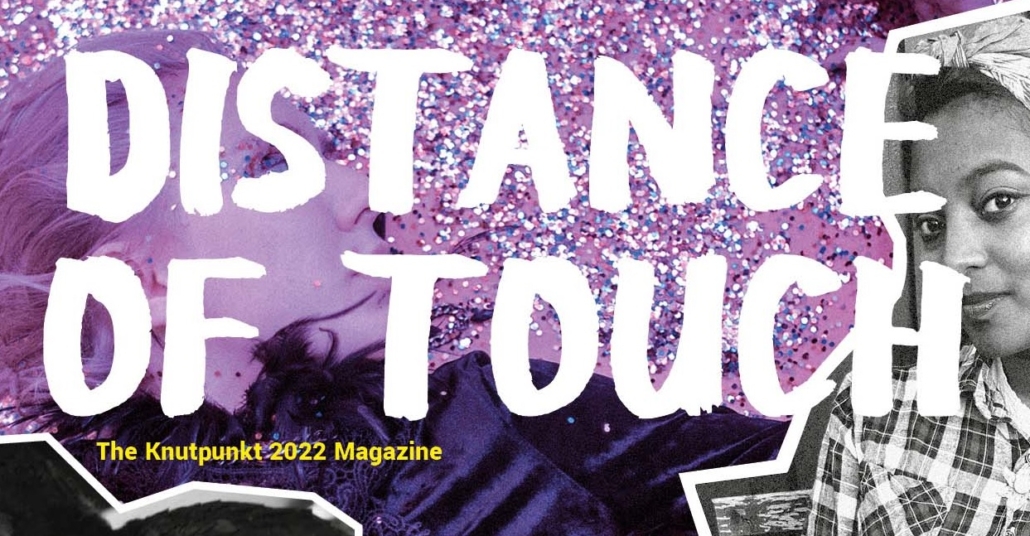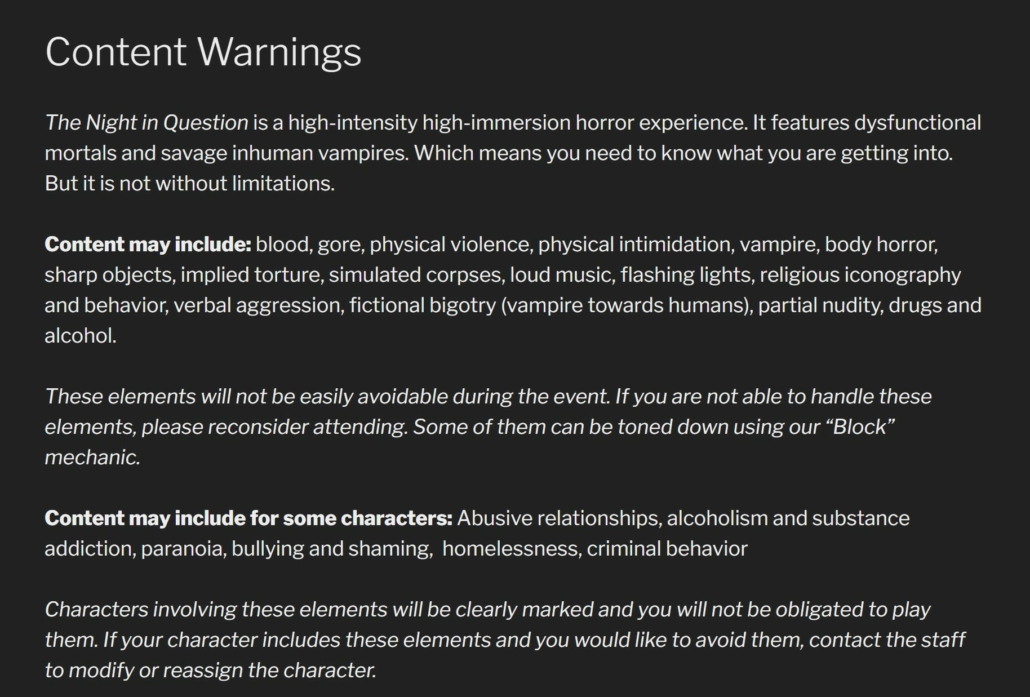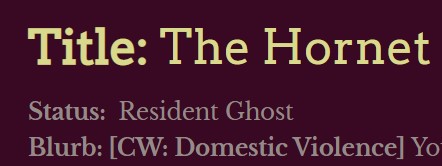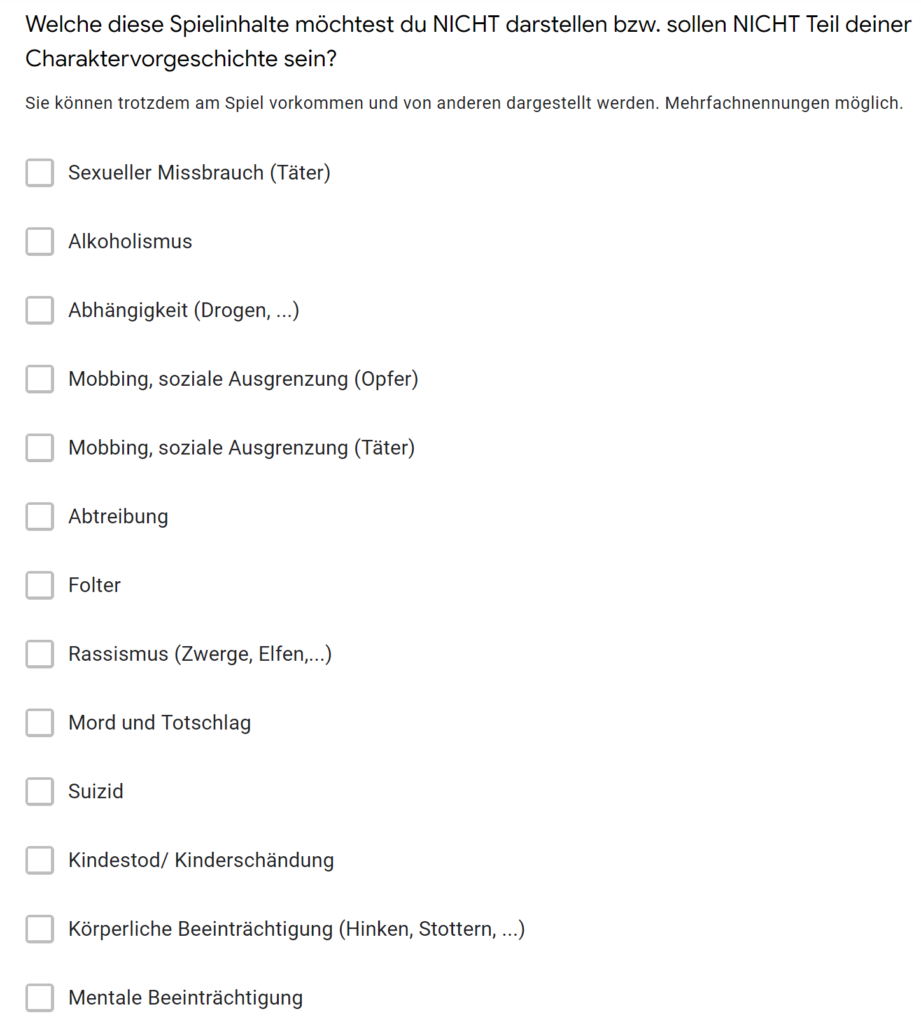The Lion, the Witch and the Workshop
Olivia Fischer

“All shall be done, but it may be harder than you think.”
― C.S. Lewis, The Lion, the Witch and the Wardrobe
Creating a pre-game workshop for your larp is an essential part of larp design. Like the wardrobe leading the Pevensie children into the magic land of Narnia, an efficient workshop is the pathway into a good larp experience.
Luckily, the larp world is full of well-thought-out workshops. Just choose one that worked well on another larp and you are good to go. End of story.
Or is it? Well, it is not that simple. However, fortunately there are some key points of instructional design that help you choose, adapt or create a workshop that can improve the players’ experience at your larp.
Figure out which prerequisites players need in order to have a good experience.
Drawing from Bigg’s theory of Constructive Alignment, I would say that the most important thing, when designing a workshop, is to know what you want players to do or experience at your larp. This might sound simple, but in fact it often is not. It is quite hard to figure out what people really need when they are in-game. It might be certain meta-techniques, in-game knowledge, player skills, etc.
Whatever it is, your workshop should be tailored to support people gaining this specific prerequisite. That one workshop that worked so perfectly well for you in the last larp you attended might not be the optimal choice because every larp has different requirements.
The following questions are intended to help you think about prerequisites that might (or might not) be crucial to your larp.Think of the experiences you want your players to have at your larp, of the scenes you want them to play and the atmosphere and mood you want them to feel.
Do players need certain prerequisites, such as techniques, skills or knowledge, in order to:
- feel safe?
- be brave?
-> emotional prerequisites - calibrate their experience with fellow players?
- navigate your larp?
- be able to steer and pace their experience?
-> larp flow prerequisites - immerse themselves into the world you created?
- be able to portray their role?
- support others in the portrayal of their role
-> portrayal prerequisites - bring the fictional world to life?
- get into character?
-> kick-off prerequisites
Once you have identified the prerequisite(s), create a workshop in which people can gain and practice the exact tool,skill or knowledge. Be careful: often the true prerequisites are hard to pin down and you need a lot of time to figure them out.
Here’s a few examples:
Portraying a subgroup – Most larps feature different in-game social groups. Let’s say you want players to portray a tribe and you really want them to feel a sense of community and group identity. It will not be enough to have them stand in a circle, introduce themselves to each other and talk about their connections and family relationships. If your intended experience outcome is feeling the group identity, you can give them time to develop e.g. a greeting that is unique to their group and practice it. You can let them improvise a scene from the past, for example a celebration and thereby give them a common memory.
Playing erotic scenes – Obviously players need to know safety techniques in order to navigate erotic scenes in larps. However, often players already know your chosen techniques so you might not need to spend so much time on practicing. If you want your payers to play erotic scences, trust and confidence are key ingredients. Create a workshop in which players have time to build up trust with their co-players.
Creating opportunities for conflict and fellowship – A beloved tool for this is the status line, in which players line up according to a specific attribute (from the richest to the poorest or from the best student to the rebellious slacker). Often status lines are done quickly, one after another, without time to let players work with the outcome of the status line.
Why not let people choose somebody from the other end of the line and give them a couple of minutes to figure out how they want to deal with that person in-game? Or why not divide the line into subgroups and let the subgroups create a common memory?
Accommodate different learning preferences
People have different preferences when it comes to learning something new. Even if you plan to practice safety techniques intensely in a workshop, it might be more efficient for some of your players to receive a description of those techniques in written form or as a video file. Nobody says that a preparatory workshop can only be done right before a larp. It can also be done earlier and it might even be done asynchronously. Asynchronous learning means that you create a learning or practice opportunity in which people can learn on their own schedule (watching a video about calibration techniques or having a group of players in an online meeting working through preparatory tasks provided by you).
It can be helpful for people to offer information in different styles (written, audio, visual). You could let people choose how they learn something best, which might mean that some people prefer to watch a workshop instead of actively participating.
Use clear, simple language and be organized
No matter whether you lead a workshop in your participants’ native language or not, use simple sentences and words. Try to shape clear and well organized instructions. Use a cheat sheet in order to maintain your well-thought-out structure of the workshop and the accompanying instructions.
Keep an eye on the time and stick to your schedule.
Give people time and different opportunities to practice necessary skills for the larp
People need time to rehearse and practice. If you want your players to play a military unit, let them practice how to move as a group and how to greet people of different ranks. If a specific meta-technique is crucial for your larp, let people practice it in different settings and with different partners.
Stick to commonly known safety & calibration tools whenever possible
Try not to invent something new for every larp when it comes to safety techniques or safe words used to de-escalate or stop a scene. Your players need to be able to use safety techniques in emotionally or cognitively challenging moments so they need something they have practiced a lot. Ideally this is something they have used at other larps and which they have automatized.
It might seem appealing to you to invent unique safe words for every larp but from a learning perspective this does not make sense. It would be smart if the larp world could agree on one shared tool-set for de-escalating or stopping a scene. A common non-verbal gesture like the tap-out and a verbal equivalent could be quite helpful for everybody having problems with memorizing new tools.
Be transparent about the purpose of the workshop
People usually have an easier time with learning if they know why they learn something. Don’t make a mystery out of it. If you want players to learn a certain metatechnique, give them concrete examples when and how they can use it during the larp. Explain to them why it will make their experience better.
Consider your participants’ backgrounds
Your players might come from different larp cultures or they might have different educational backgrounds. Try to create an interesting program for experts which is not overwhelming for newbies. Explain terms that are not part of everyday language.
Purpose Built
There are a lot of workshops around and it is perfectly fine to use them for your larp. However, never forget to adapt them to your purposes! If you just copy a well-working workshop without copying the whole larp, the risk is high that you are wasting precious time.
Creating a fitting workshop is part of the larp design process and if you do it well, you will provide players with a pathway to your magical land.
Dieser Buchbeitrag wurde ursprünglich hier veröffentlicht:
Distance of Touch: The Knutpunkt 2022 Magazine, edited by Juhana Pettersson, 118-121. Knutpunkt 2022 and Pohjoismaisen roolipelaamisen seura.
und kann hier als Buch erworben werden bzw. als pdf gratis heruntergeladen werden:





